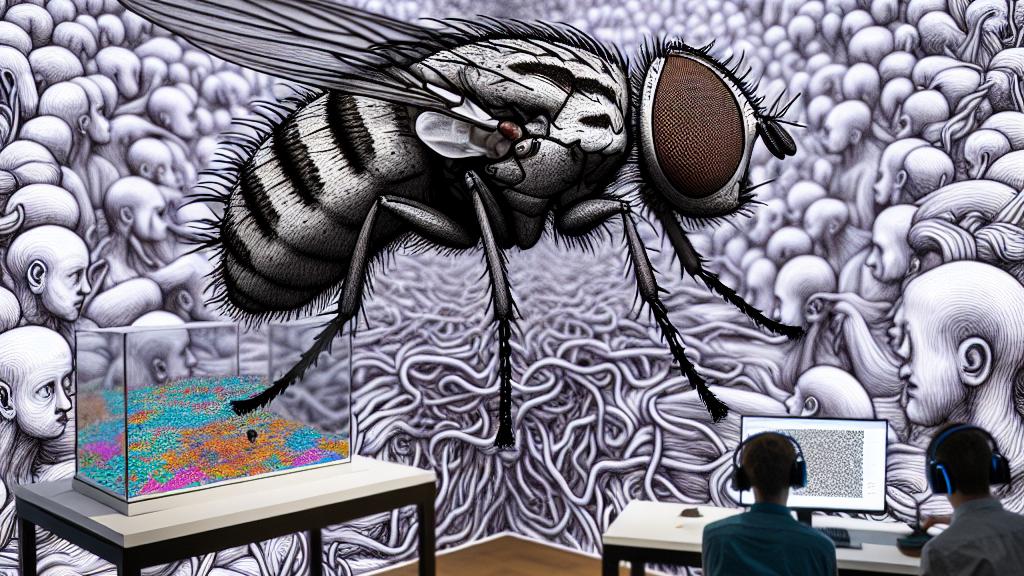Advancements in Virtual Fly Models for Sensory Navigation Research
Overview
- EPFL researchers have crafted NeuroMechFly v2, a sophisticated virtual fly model that simulates the exceptional navigation abilities of Drosophila melanogaster.
- This intricate model incorporates realistic sensory feedback, enabling it to navigate through complex environments just like real flies.
- The insights gained from this innovative research may significantly impact fields like robotics and artificial intelligence, enhancing navigation systems.

Unveiling NeuroMechFly v2
In Switzerland, the École Polytechnique Fédérale de Lausanne (EPFL) has created waves in the scientific community with its impressive virtual fly models, particularly the latest, NeuroMechFly v2. This remarkable innovation goes beyond mere imitation; picture a virtual fruit fly diving through a swirling maelstrom of scents and visual stimuli, making real-time decisions just as its biological counterpart would! The research team captures the essence of Drosophila, whose simplified nervous system is both easier to study and remarkably efficient. By modeling its navigation tactics, NeuroMechFly v2 opens up a treasure trove of information about how the fly's tiny brain orchestrates complex movements, shedding light on neurobiology in a way never seen before.
Exploring Real-World Navigation Insights
NeuroMechFly v2 is a game-changer when it comes to understanding insect behavior. Envision this: the model gracefully dodges obstacles while honing in on a tantalizing odor, each movement mirroring the remarkable agility of real fruit flies. What’s particularly intriguing is how the model employs intricate feedback mechanisms, allowing it to track objects and navigate rough terrains intelligently! For example, when an emerging threat appears, the simulated fly reacts with lightning speed, demonstrating the innate survival skills embedded within its neural framework. This highlights the fascinating interplay between sensory input and behavioral response, offering invaluable insights into both biological and artificial systems. Such vivid representation illustrates how far we've come in comprehending the complex world of animal navigation.
The Future of Bio-Inspired Technology
Looking ahead, the implications of these virtual fly models stretch far beyond the laboratory walls. Can you imagine robots equipped with the navigation strategies derived from NeuroMechFly v2? These machines could deftly weave through bustling spaces with the same precision and awareness as a fruit fly! Moreover, understanding the neural mechanisms at play opens an exciting gateway to advancing artificial intelligence. Researchers can apply these findings to enhance navigation algorithms within AI systems, making them more adept at maneuvering in dynamic environments. This interplay of biology and technology not only promises innovative developments but fosters an environment ripe for exploration and discovery. By studying the natural world, we unlock new potentials that can reshape our technological future, proving that even the smallest creatures can inspire monumental change.

Loading...